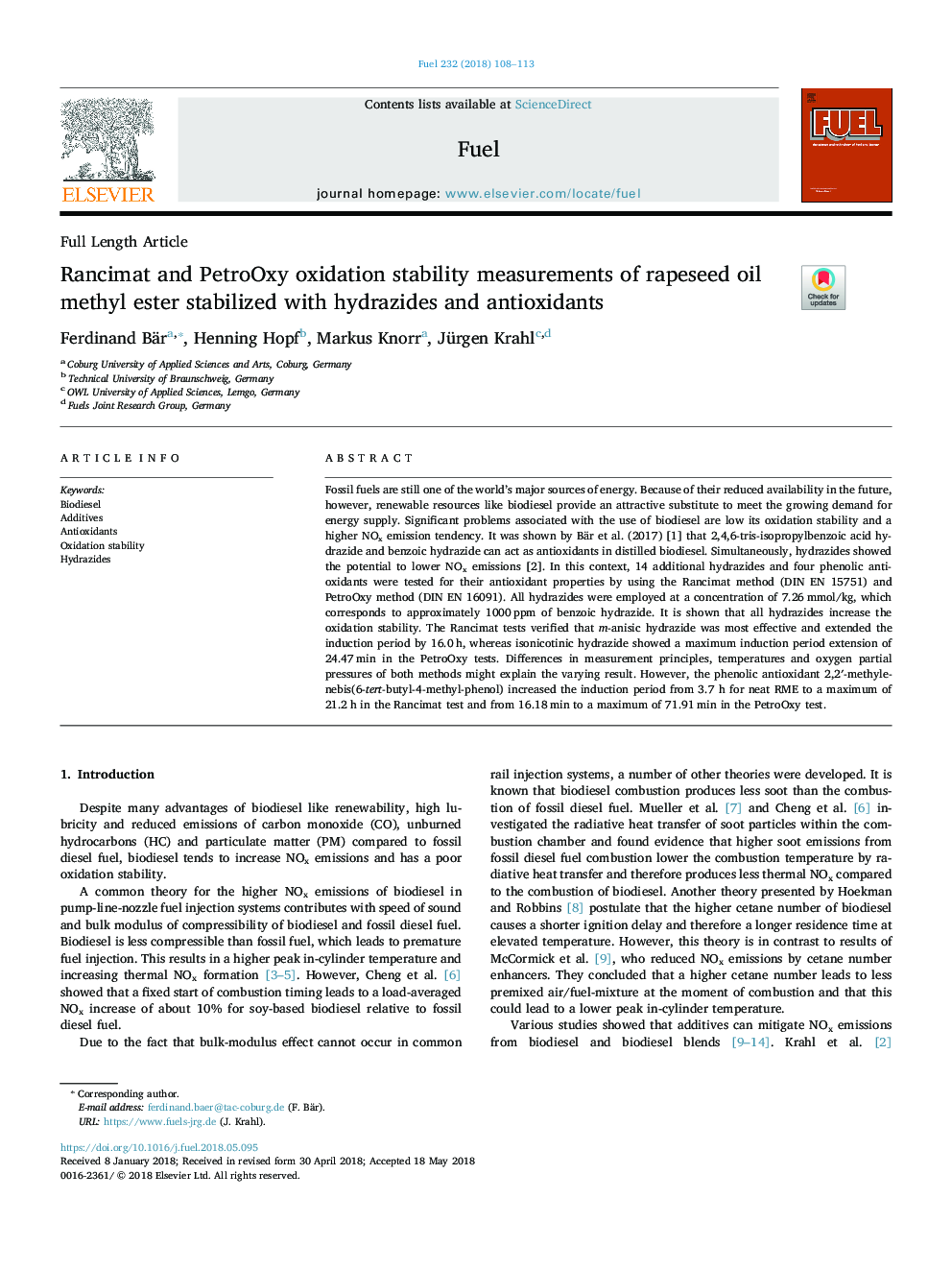| Article ID | Journal | Published Year | Pages | File Type |
|---|---|---|---|---|
| 6630360 | Fuel | 2018 | 6 Pages |
Abstract
Fossil fuels are still one of the world's major sources of energy. Because of their reduced availability in the future, however, renewable resources like biodiesel provide an attractive substitute to meet the growing demand for energy supply. Significant problems associated with the use of biodiesel are low its oxidation stability and a higher NOx emission tendency. It was shown by Bär et al. (2017) [1] that 2,4,6-tris-isopropylbenzoic acid hydrazide and benzoic hydrazide can act as antioxidants in distilled biodiesel. Simultaneously, hydrazides showed the potential to lower NOx emissions [2]. In this context, 14 additional hydrazides and four phenolic antioxidants were tested for their antioxidant properties by using the Rancimat method (DIN EN 15751) and PetroOxy method (DIN EN 16091). All hydrazides were employed at a concentration of 7.26â¯mmol/kg, which corresponds to approximately 1000â¯ppm of benzoic hydrazide. It is shown that all hydrazides increase the oxidation stability. The Rancimat tests verified that m-anisic hydrazide was most effective and extended the induction period by 16.0â¯h, whereas isonicotinic hydrazide showed a maximum induction period extension of 24.47â¯min in the PetroOxy tests. Differences in measurement principles, temperatures and oxygen partial pressures of both methods might explain the varying result. However, the phenolic antioxidant 2,2â²-methylenebis(6-tert-butyl-4-methyl-phenol) increased the induction period from 3.7â¯â¯h for neat RME to a maximum of 21.2â¯h in the Rancimat test and from 16.18â¯min to a maximum of 71.91â¯min in the PetroOxy test.
Related Topics
Physical Sciences and Engineering
Chemical Engineering
Chemical Engineering (General)
Authors
Ferdinand Bär, Henning Hopf, Markus Knorr, Jürgen Krahl,
